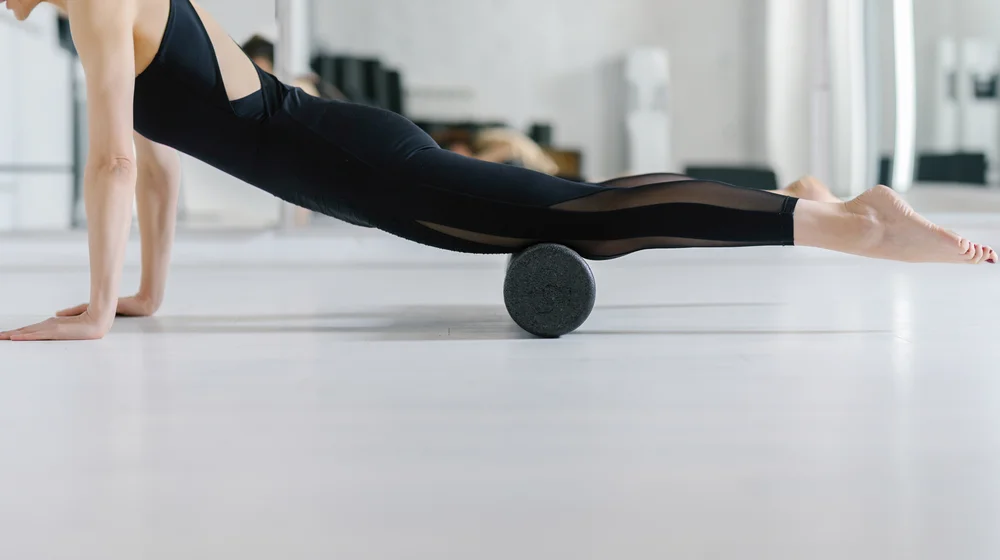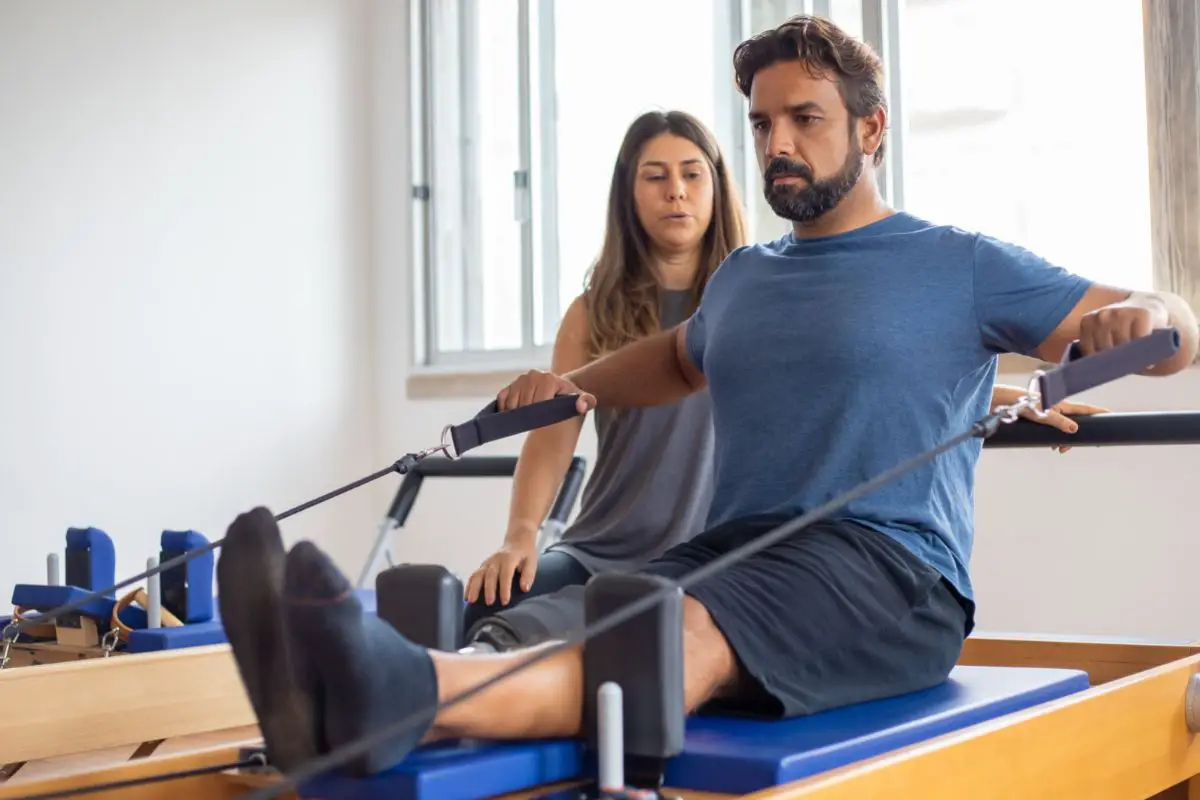Exercise

Pilates is a fantastic form of exercise that comes with a whole host of benefits.
It can help with your mental health, it can improve your general strength and balance and so much more. Of course, it isn’t without its unique challenges.
Perhaps the hardest thing to deal with is pain or soreness that you may experience after a pilates session.
Muscle soreness is a common experience for many people after any kind of strength based training, but is it normal? Is pilates meant to cause stomach pain? Here’s everything that you need to know.
Does Pilates Cause Stomach Pain?
So does pilates cause stomach pain? It certainly can, especially since pilates is designed to work the core muscles which are around your stomach area.
Some degree of soreness is to be expected after any strength training workout, and this also goes for pilates. It’s actually a good thing in most instances.
It’s something known as Delayed Onset Muscle Soreness, or DOMS for short. It’s a sign that the muscles, which have been torn by the exercise, are starting to repair themselves. This is how the muscles grow.
You may find that you are feeling sore a couple of hours after the workout is over, but the chances are that you are experiencing DOMS the day after your pilates session.
It typically tends to occur roughly 24 to 48 hours after the exercise session.
Other Areas Of Soreness After Pilates
Pilates is a kind of workout that is made to work the core muscles.
As such, some degree of soreness in the core muscles is to be expected especially if you don’t tend to exercise your core muscles a lot.
The majority of the soreness is likely to be in the core muscles, but you may also find that you feel sore in other parts of the body after a pilates session.
Soreness from pilates most commonly tends to happen in the legs and the arms, but this is just because the muscles are growing and isn’t usually a cause for concern.
There’s a good chance that after you have been doing pilates for a while the soreness will reduce or stop.
By this point your body will have started to get used to the exercise and your muscle strength has improved.
Of course, even some pilates experts may find that they occasionally feel sore after a session but it’s not likely to be as bad.
It’s worth noting if you don’t get sore, actually. There’s a chance that it may be because your workout isn’t intense enough to be challenging your muscles.
When Soreness and Pain Is A Problem
As we’ve already established, muscle soreness can sometimes be a good thing when it comes to working out.
With that being said, there’s a big difference between soreness and pain. Likewise, some pain and soreness is certainly not normal.
One of the big things that you need to look out for is muscle strain. This is not just your muscles stretching and growing.
Muscle strain happens when you have worked your muscles too hard.
Some symptoms of muscle strain include a feeling of tenderness and heat in the affected muscles, and inflammation in the abdominal muscles.
Sometimes this pain can be more like a stabbing pain and it may be more challenging to deal with when you move the muscles.
If you have strained your muscles, then the best remedy is to rest the muscles and use heat or ice therapy to heal.
Make sure that you aren’t continuing to exert the muscles with further exercise in the meantime.
The biggest problem is that you run the risk of overtraining sometimes when you exercise, and this can often hinder your muscle growth rather than help it.
Strained muscles can even result in chronic pain if they aren’t properly taken care of because your muscles can end up struggling to work as they should.
It’s best to avoid overtraining and strain entirely by recognizing your limits and stopping when you’ve had enough.
How To Relieve Stomach Pain After a Pilates Session

So how do you relieve post-pilates stomach pain and soreness? There are a few things that you can try.
Cold and Hot Showers
You may be surprised to learn that alternating hot and cold showers can be really beneficial for helping with muscle soreness.
Heat can be more effective for some people, whereas the cold can be better for others.
You can play around with whatever option works best for you. You may prefer an ice bath or a steaming hot shower. See what works for you!
Be Kind To Your Body
It can be tempting to push yourself when you’re doing pilates. You want to see how much you can do.
It’s okay to push yourself but not too hard – after all, if you push yourself too hard you are more likely to strain your muscles.
Likewise, you should also listen to your body after your exercise. If you are noticing abnormal levels of pain then you should avoid doing workouts for a little while.
Alternatively you can also opt for a less intense workout. If nothing helps the pain at home, then speak to a doctor for further advice. It’s always best to be safe.
Get Enough Rest
In between your workouts, make sure that you are taking enough rest. Rest is vital in order for your muscles to recover, after all.
On the same subject, it’s not just about relaxing – you also need to ensure that you are getting enough sleep too. Sleep is crucial for you to recover from exercise.
Keeping a consistent sleep schedule can be helpful – go to sleep and try to wake up at the same time each day.
The average adult should be getting around 7 to 8 hours of sleep every night. The amount of sleep that you need will depend on your needs, but this is a good sleep goal to work towards.
Stay away from screens and other forms of blue light too, as this will help you to sleep better throughout the night.
Stay Hydrated
It’s always important to have enough H2O to get you through the day! It’s especially important when you’re recovering from a workout.
Drink your water both before and after the workout to ensure optimum hydration.
Do Your Warm Ups
You’ve probably heard it all before – warm ups are important for exercise for your muscles.
You may think that you don’t need to warm up before your pilates workout since pilates involves a lot of stretching, but this is not the case.
Just do a couple of light stretches and warm ups before you get started and your muscles will recover much faster.
Conclusion
Pilates certainly can cause stomach soreness, but it’s worth it for all of the benefits that you will gain from doing pilates!
Just make sure that you are properly taking care of your body and you should have no problems.




